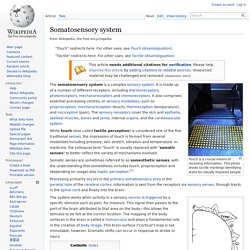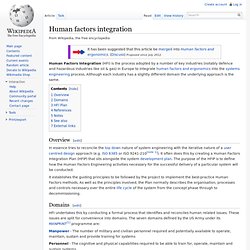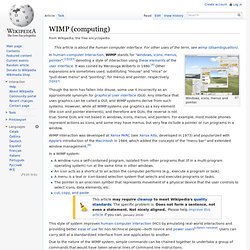

Logiciel HTML, CSS, créer une application. Edge Code CC Programmez vos contenus et applications en HTML, CSS et JavaScript à l'aide de la version préliminaire d'Edge Code, distribuée dans le cadre du projet Open Source Brackets. Travaillez rapidement avec un éditeur de code innovant, parfaitement compatible avec les autres composants d'Edge Tools & Services. Pour en savoir plus sur Edge Code → Edge Inspect CC Prévisualisez et contrôlez vos créations web sur les terminaux mobiles. Pour en savoir plus sur Edge Inspect → Screen graphics, rapid prototyping, web graphics. Adobe Fireworks.
Adobe Fireworks (formerly Macromedia Fireworks) is a bitmap and vector graphics editor. It was originally developed using parts of Macromedia xRes, which Adobe acquired in 2005. Fireworks is made for web designers for rapidly creating website prototypes and application interfaces. Its features include slices and the ability to add hotspots. It is designed to integrate with other Adobe products such as Adobe Dreamweaver and Adobe Flash. It is available as either a standalone product or bundled with Adobe Creative Suite. On May 6, 2013, Adobe announced that Fireworks would be phased out, much to the dismay of its users. User interface[edit] Fireworks' user interface is consistent with the rest of Adobe Creative Suite, similar to that of Adobe Photoshop.
Index - Haxe. Haxe. Haxe is an open-source high-level multiplatform programming language and compiler that can produce applications and source code for many different platforms from a single code-base.[1] Code written in the Haxe language can be source-to-source compiled into Adobe Flash applications, JavaScript programs, C++ standalone applications (to some extent),[2] PHP, Apache CGI, and NodeJS server-side applications.[3][4] Haxe was developed by Nicolas Cannasse and other contributors, and was named Haxe because it was short, simple, and "has an X inside", which the author humorously asserts is necessary to make any new technology a success.[6] Haxe is pronounced "hex"[7] (/hɛks/),[8] although the authors of the only published book on the language pronounce it "hacks".[9] Architecture[edit] Development of Haxe was started in October 2005 and the first beta version was released in February 2006.
ActionScript 3 to Haxe[12]C# to Haxe[13] Advantages to using Haxe include:
Web Design. Somatosensory system. Touch is a crucial means of receiving information.

This photo shows tactile markings identifying stairs for visually impaired people. While touch (also called tactile perception) is considered one of the five traditional senses, the impression of touch is formed from several modalities including pressure, skin stretch, vibration and temperature. In medicine, the colloquial term "touch" is usually replaced with "somatic senses" to better reflect the variety of mechanisms involved. Somatic senses are sometimes referred to as somesthetic senses, with the understanding that somesthesis includes touch, proprioception and (depending on usage) also haptic perception.[1] Processing primarily occurs in the primary somatosensory area in the parietal lobe of the cerebral cortex: information is sent from the receptors via sensory nerves, through tracts in the spinal cord and finally into the brain.
Human–computer interaction. A woman teaching girls in Afghanistan how to use computers.

Human use of computers is a major focus of the field of HCI. Because human–computer interaction studies a human and a machine in conjunction, it draws from supporting knowledge on both the machine and the human side. Human factors integration. Human Factors Integration (HFI) is the process adopted by a number of key industries (notably defence and hazardous industries like oil & gas) in Europe to integrate human factors and ergonomics into the systems engineering process.

Although each industry has a slightly different domain the underlying approach is the same. Overview[edit] In essence tries to reconcile the top down nature of system engineering with the iterative nature of a user centred design approach (e.g. ISO 6385 or ISO 9241-210[note 1]). It often does this by creating a Human Factors Integration Plan (HFIP) that sits alongside the system development plan. It establishes the guiding principles to be followed by the project to implement the best-practice Human Factors methods. WIMP (computing) Windows, icons, menus and pointer.

Though the term has fallen into disuse, some use it incorrectly as an approximate synonym for graphical user interface (GUI). Any interface that uses graphics can be called a GUI, and WIMP systems derive from such systems. However, while all WIMP systems use graphics as a key element (the icon and pointer elements), and therefore are GUIs, the reverse is not true. Some GUIs are not based in windows, icons, menus, and pointers. For example, most mobile phones represent actions as icons, and some may have menus, but very few include a pointer or run programs in a window.
WIMP interaction was developed at Xerox PARC (see Xerox Alto, developed in 1973) and popularized with Apple's introduction of the Macintosh in 1984, which added the concepts of the "menu bar" and extended window management.[8] In a WIMP system: User interfaces based on the WIMP style are good at abstracting workspaces, documents, and their actions. Alistair D.